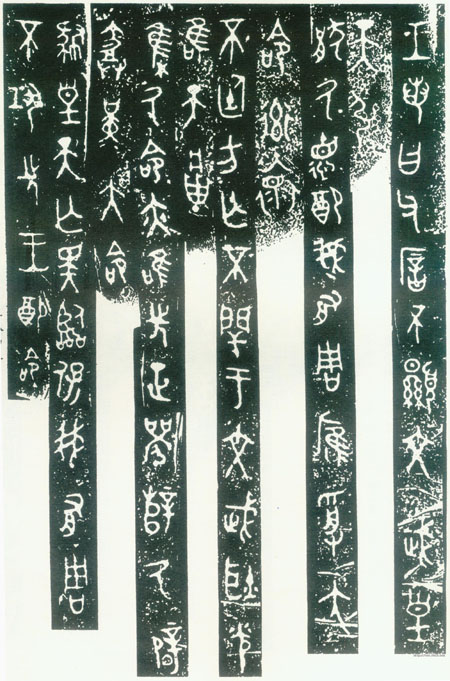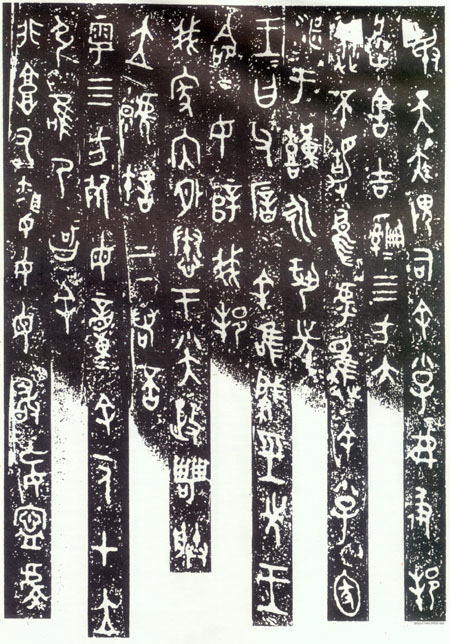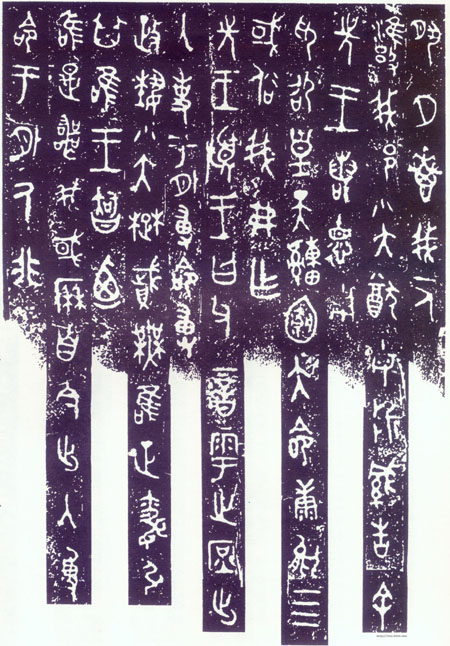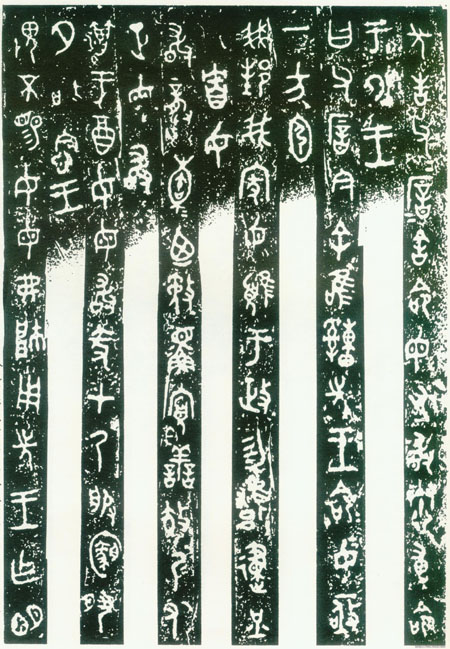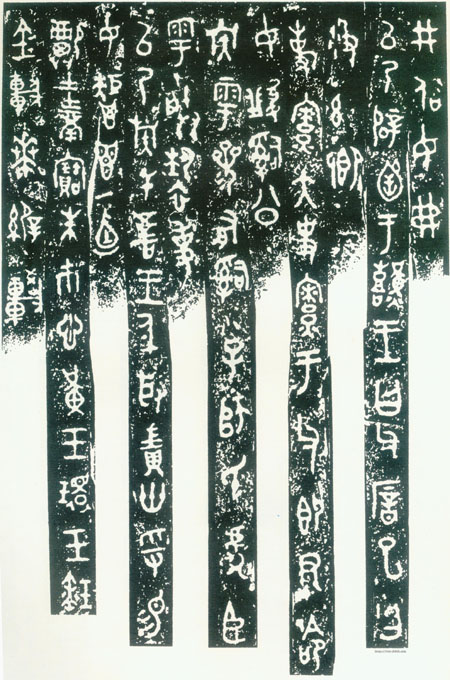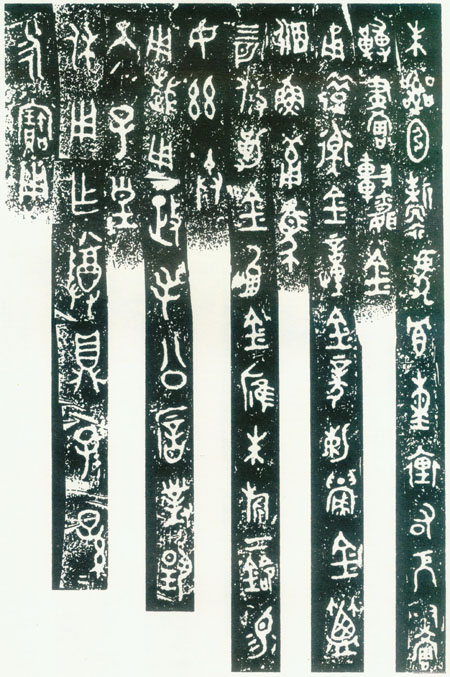The development history of bronze inscriptions and its representatives of calligraphy
1. Bronze inscriptions are the inheritance and development of Oracle
In Chinese archaeology, bronze ware mainly refers to objects made of copper-tin alloy in Xia, Shang, and Zhou dynasties. At that time, there were inscriptions on many bronze wares. At first, people called it Zhongdingwen, but later felt that this name could not cover the inscriptions on other artifacts other than Zhongdingwen, so it was renamed Jinwen, which means the characters carved on all metals. Therefore, Bronze inscriptions can be said to be the inheritance and development of Oracle. It was born in the Yin and Shang period and prospered in the Western Zhou Dynasty. Its main contents include sacrificial ceremonies, expeditions, rewards of tin fate, exhortation of ministers, and praise of ancestors. It involves the political, economic, military and religious fields of the society at that time. It provided extremely precious historical materials for future generations and attracted the attention of historians. At the same time, the specific stippling and structural forms displayed by the bronze inscriptions, often together with its material carrier, produce a shocking historical charm and aura, which not only fills the gaps in the history of calligraphy in the Shang and Zhou dynasties, but also becomes a researcher of calligraphy theory. The object of attention, and provides an object of copying and method for the development of calligraphy art.
Judging from the materials excavated and handed down from generation to generation, inscriptions on inscriptions were the most numerous before the Qin and Han dynasties, and the earliest was in the Shang Dynasty. Most of the inscriptions of the Western Zhou Dynasty came from the political, economic, and cultural centers of the Western Zhou Dynasty-Zhou Yuan and Fenghao, as well as Baoji, Lintong, Chang'an and other places in Shaanxi. Since the first unearthed Shichending in four years of the Western Han Dynasty, a large number of treasures have been unearthed in various places. Especially since the founding of the People’s Republic of China, the unearthed bronzes such as Da Yu Ding, Mao Gong Ding, Sanshi Ding, Guo Jizi White Ding, Ligui, Dake Ding, Xiao Ke Ding, Wall Ding, etc. are all heavy objects. Each piece of heavy equipment is regarded as a national treasure and is of great value. According to incomplete statistics: So far, there have been more than 4,000 bronzes with inscriptions, which are regarded as treasures due to their large number and exquisite production. The vast majority are collected in the Chinese History Museum, Shaanxi Provincial Museum, Palace Museum, Nanjing Museum, Shanghai Museum, Henan Provincial Museum, Hubei Provincial Museum, Hebei Provincial Museum, etc.
2, the characteristics and style of inscriptions
According to the research of experts and scholars, the characteristics and style of bronze inscriptions can be roughly divided into four periods:
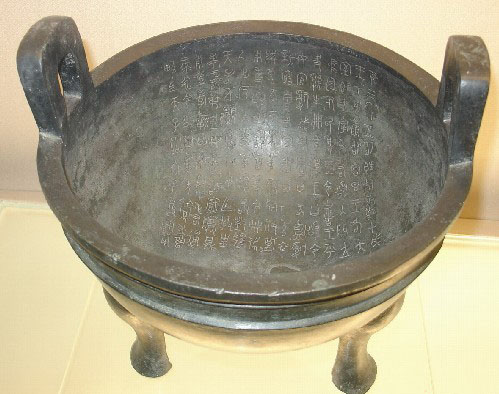
The first is the Yin and Shang period. Bronze inscriptions of the Shang Dynasty are generally relatively short, only about one or two or ten characters. For example, "Father Yi" and "Father Ding" are mainly people's names, most of which are clan names, names, names of ancestors being sacrificed, names of utensils, names of manufacturers, and clan emblems. There are many hieroglyphs in the inscriptions of the Shang Dynasty. Most of them are animals, such as horses, tigers, birds, fishes, elephants, pigs, dogs, but also weapons, families, boats, chariots, Yagata, Yamagata, descendants, etc. Various images. This is a peculiar phenomenon of Shang Dynasty Jinwen. These hieroglyphs are more primitive and realistic than the oracle bone inscriptions, and can be said to be the older fonts in the bronze inscriptions. The typefaces of the inscriptions of this period are strict and strict, and the writing strokes are sharp and majestic. Representative works include: "Si Mu Wu Ding", "Xu Si Zi Ding", "Si Mu Xin Ding", etc., although there are few words, they have unique styles, some are simple and solemn, some are smooth and thin, which opened the inscriptions of the Western Zhou Dynasty. Precedent.
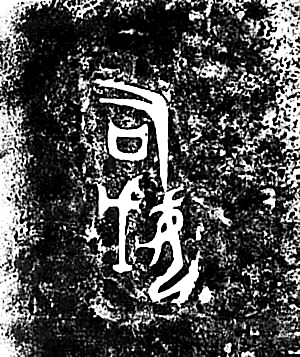
The second is the Western Zhou Dynasty. During this period, there was a great development of inscriptions. Due to the prosperous ritual vessels of the Western Zhou Dynasty, the number of inscriptions remaining in the world was very considerable. In terms of style, the Bronze inscriptions of the early Western Zhou Dynasty were characterized by dignity, dignity, magnificence, and magnificence. The strokes and strokes are sharp and sharp, and the overall beauty of the form of the combination of lines and blocks is reflected. In the middle of the Western Zhou Dynasty, the style of the inscriptions changed from being simple and elegant to being elegant and peaceful. The brush strokes were soft and smooth, and the strokes were round and round, but the decorative meaning was weakened, the meaning of the brush was strengthened, and the layout of the lines was sparse and free. In the late Western Zhou Dynasty, the bronze inscriptions tended to mature, the strokes tended to be unified from the early fatness and thinness, the fonts were more free, and the styles also showed diversification, showing the style characteristics of the mature period of the seal. The famous heavy tools of this period include the Great Yuding Ding, Sanshi Ding, Mao Gong Ding, Xiao Ke Ding and so on. In general, the fonts of the inscriptions in this period are generally more balanced, the strokes are round and even, the strokes are round, so the strokes are neat and solemn.
The third is the Eastern Zhou Dynasty. It is also the period of decline of the inscriptions. During this period, more and more engravings were made, and the strokes of the castings became thinner. Therefore, the bronze inscriptions at this time are very beautiful, slightly shorter and more varied than those of the Western Zhou Dynasty. What is striking is that the bird book appears in the bronze inscriptions, which is mainly used for the decoration of weapons. At the same time, in addition to the name, the inscription at this time is also accompanied by a congratulatory message such as "children and grandchildren Sun Qiyongbao".
Fourth, after the Qin and Han dynasties, it is also the end of the inscriptions. The style of the inscriptions has gradually changed, which is different from the previous inscriptions. Qin Shihuang unified the world and abolished the feudal separatism, the palace's Yi artifacts gradually disappeared, and the manufacture of bronze Yi artifacts ceased. The inscriptions on the metalware of the Qin Dynasty left over are mainly weights and measures, and most of the main inscriptions are records about the standardization of weights and measures. As for the inscriptions in the Han Dynasty, most of them are the name, age, size of the utensil itself, etc., as well as some auspicious languages.
3. Main representatives of Jinwen:
"Quiet Gui (静簋)" in the Mid Western Zhou Dynasty
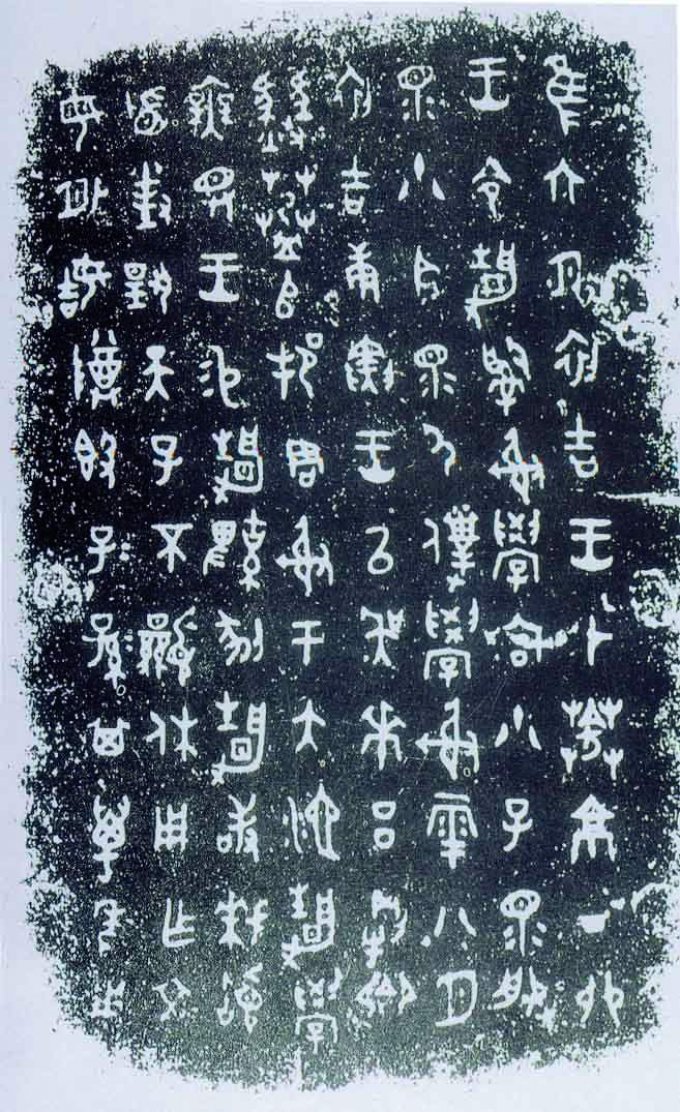
"Jinggui" is an artifact from the Mu Dynasty in the middle of the Western Zhou Dynasty. There are eight lines and nine crosses with inscriptions inside, which belong to the great seal calligraphy. In this period, the Bronze and Great Seal fonts were transitioning from the middle of the Western Zhou Dynasty to the late period. The inscriptions of "Jinggui" are said to be comfortable, simple and elegant, with the tendency of "short pen and long interesting". It is a masterpiece of the golden calligraphy art of the mid-Western Zhou Dynasty.
Explanation of "Jinggui":
唯六月初吉,王在 京。丁卯,王令静司射学宫,小子及服及小臣及夷仆学射。越八月初吉庚寅,王以吴 、吕刚合幽 师邦君射于大池。静教无尤。王赐静鞞 。静敢拜稽首,对扬天子丕显休,用作文母外姞尊簋,子子孙孙其万年用。
Bronze Inscriptions of the Western Zhou Dynasty "Sanshi Pan"
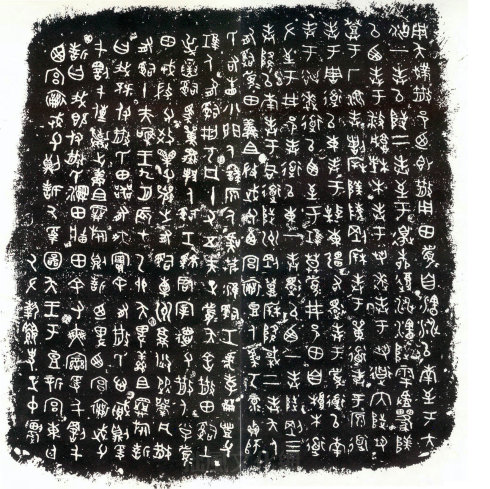
The Sanshi plate was unearthed during the Kangxi period and was tributed to Beijing during the Jiaqing period as a gift to celebrate the birthday of the Emperor Jiaqing, and has since become a royal collection. The inscription on the plate has a total of 357 words, which records the land contract in the late Western Zhou Dynasty. The scattered country located in Fengxiang, Baoji, Shaanxi today, was invaded and occupied by the northwestern country. The two countries negotiated peace, fixed the national border, and compensated for the cession of land. The process and contract were all cast on the plate as proof. The shape and decoration of the Sanshi plate all present the simple style of the bronzes of the late Western Zhou Dynasty, and the text lines are very flexible. It is an important material for studying the inscriptions of the Western Zhou Dynasty.
The Sanshi Pan, also known as the "Sagittarius Pan", was the most important instrument in the Western Zhou Liwang period. It was unearthed in Fengxiang, Shaanxi in the early years of Qianlong in the Qing Dynasty, and was once hidden in Qianlong's inner mansion. Known to the world for his long inscriptions. The inscription of the Sanshi Pan is cast on the inner bottom of the pan, with a total of three hundred and seventy-five characters. It is a very outstanding work. The calligraphy is simple and majestic, the fonts are bold and simple, honest and mellow, the knots are unique and pure, and they are magnificent and colorful. There is the dignity of bronze inscriptions, and the smoothness of cursive script, opening the end of "cursive seal".
Sanshi Disk Interpretation:
用夨[戈菐]散邑,廼即散用田.眉:自瀗涉,以南至于大沽,一封;以陟,二封;至于邊,柳.復涉瀗,陟雩[虘又]■■[阜美],以西,封于播城,楮木;封于芻逨,封于芻道;内陟芻,登于厂湶,封[者刀],[木厈].[阜美]陵崗,[木厈].封于原道,封于周道;以東封于■東疆;右還,封于眉道;以南,封于■ 逨道;以西,至于[工隹]莫.眉井邑田:自桹木道左至于井邑封道,以東一封;還,以西一封;陟崗,三封;降,以南,封于同道;陟州崗,登,[木厈];降, 棫;二封.夨人有司眉田:鮮且、微、武父、西宮襄、豆人虞考、彔、貞、師氏右眚、小門人繇、原人虞艿、淮司工虎、■龠、豐父、[工隹]人有司刑、考,凡十又五夫.正眉夨舍散田:司徒逆、司馬單堒、邦人司工[馬京]君、宰德父;散人小子眉田:戎、微父、效■父、襄之有司橐、州■、修從■,凡散有司十夫.隹王九月,辰才乙卯,夨俾鮮且、■旅誓曰:“我既付散氏田器,有爽,實余有散氏心賊,則爰千罰千,傳棄之.”鮮且、■旅則誓.廼俾西宮襄、武父誓曰:“我既付散氏濕田■田,余有爽變,爰千罰千.”西宮襄、武父則誓.氒受圖夨王
Inscriptions of the Western Zhou Dynasty "Xi Jia Pan"
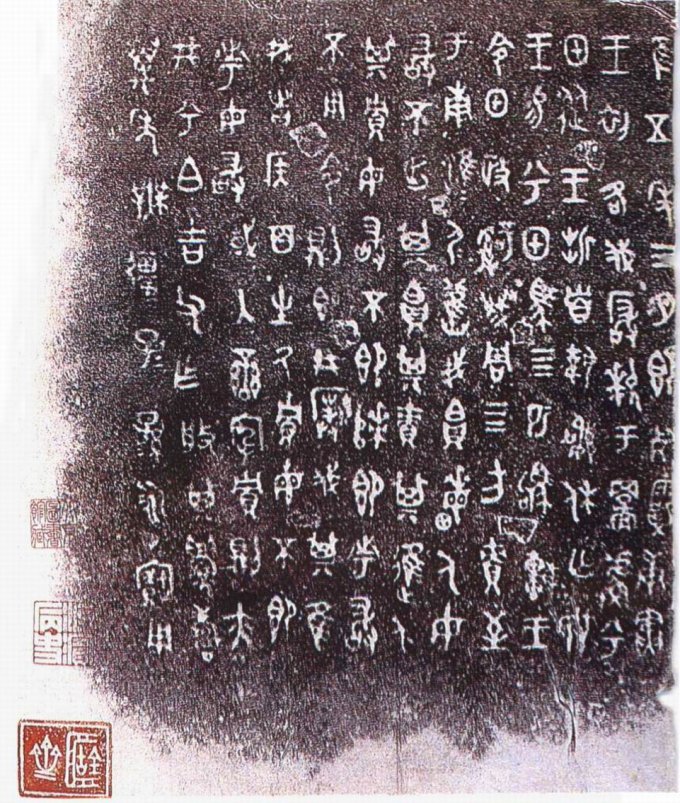
Xijia plate, round, with ears, the edge of the edge is extravagant, the inner bottom is flattened, the edge of the edge is decorated with pilfering patterns, the leather shell is black and bright, the state of handing down is obvious, the ring feet are missing, and the inner bottom is cast with 133 words. It describes the war of King Zhou Xuan against Yan Yun (the original "Hao Xuan"), and he was rewarded for his achievements in battle.
Xijia plate, because the producer Xijia, the word Jifu, one is Jifu, the bronze inscription is Xijia, Xiboji father, the author Xijiazhijia was formerly interpreted as Tianzi, so this plate is also called Xitian plate, Xi Bo Pan, Xi Bo Ji's father's plate. Bronze in the late Western Zhou Dynasty. Unearthed in Song Dynasty. The inscription is one hundred and thirty-three characters. It is described that Xi Jia (ie Yin Jifu) followed King Zhou Xuan to conquer the scorpion and levied tribute to Nanhuai Yi. The third volume of Wu Shifen's "Xiangulu" was "Xitian Pan", the sixteenth volume of Wu Dacheng's "Xuanzhai Jigulu" was "Xibopan", and the seventh volume of Fang Junyi's "Examination and Interpretation of Zhuyizhai Yi Tools" was "Xiboji". Father disk". Please refer to Guo Moruo's "Two-week Bronze Inscriptions Collection Catalogue and Explanation".
original:
隹五年三月既死霸庚寅,王初格伐玁狁于(余吾),兮甲从王,折首执讯,休亡敃(愍),王赐兮甲马四匹、軥车,王令甲政(征)司(治)成周四方责(积),至于南淮夷,淮夷旧我帛畮(贿)人,毋敢不出其帛、其责(积)、其进人,其贾,毋敢不即次即市,敢不用命,则即刑扑伐,其隹我诸侯、百姓,厥贾,毋不即市,毋敢或(有)入蛮宄贾,则亦刑。兮伯吉父作盘,其眉寿万年无疆,子子孙孙永宝用。译文:兮甲盘译文(吉世芳、吉家林、吉建军 收集整理)周宣王五年三月(月晦)庚寅日,宣王最初下令讨伐玁狁,逐之太原。兮甲吉甫遵王命,克敌执俘,凯旋归来。宣王赏赐兮甲吉甫四匹良马,一辆軥车。宣王又命兮甲吉甫东去成周(洛阳)掌政执法,责令四方交纳粮赋。至于南淮夷、淮夷,原向我周朝交纳贡帛的农人,不得欠缴贡帛、粮赋。他们来往、经商,不得扰乱地方和市肆。若胆敢违反周王的法令,则予以刑罚、征讨。特提请我周朝各地诸侯、百姓,从事商贸应在规定的市肆进行,不得到荒蛮偏僻的地方去做生意,否则,也要给予处罚。兮伯吉父特作此盘记载。其眉寿(年寿)万年无疆。子子孙孙永宝用。
Inscriptions of the Western Zhou Dynasty "Mao Gong Ding"
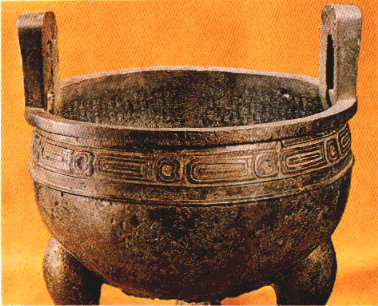
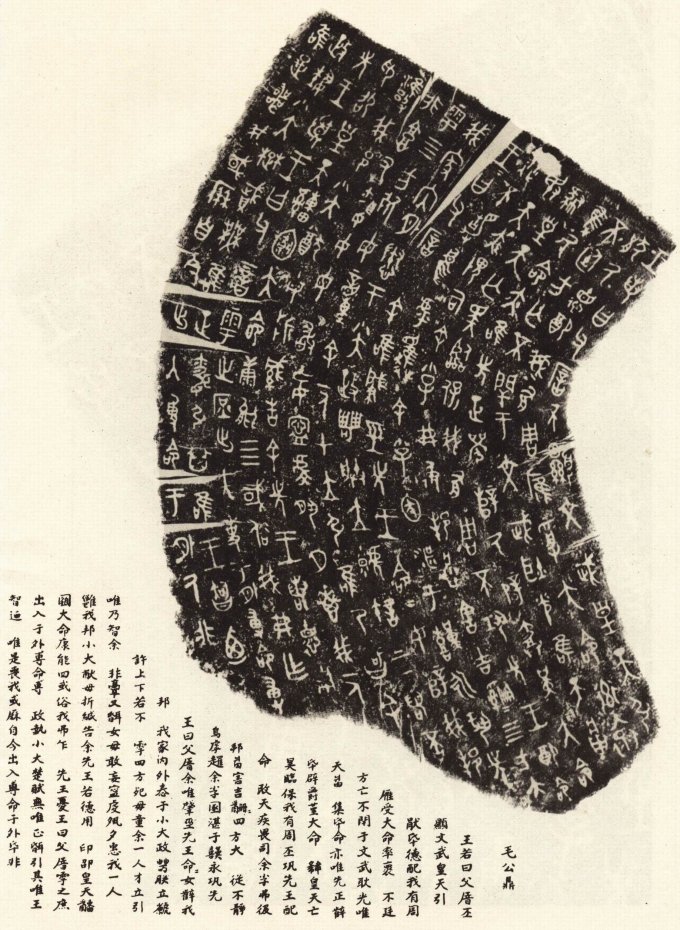
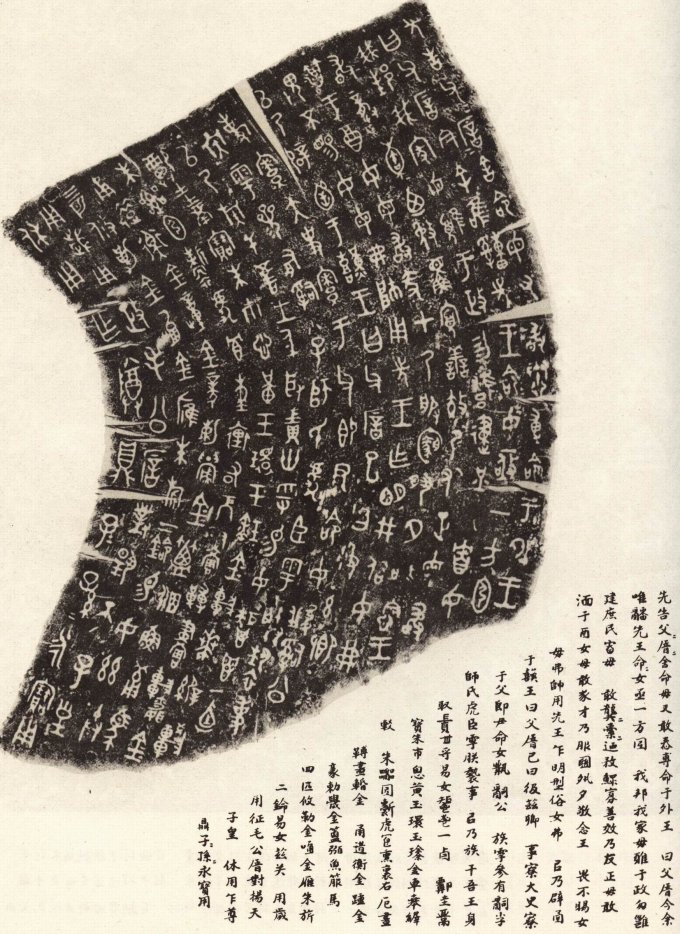
Mao Gongding, the existing Taipei Palace Museum, is a classic masterpiece of bronze inscriptions. It is said that it was unearthed in Qishan, Shaanxi in the last year of Daoguang in the Qing Dynasty. The height is 53.8 cm and the diameter is 47.9 cm. Round, with two erect ears, deep abdomen and external drums, three feet, dignified and stable. The neck is decorated with a heavy ring pattern and a string pattern, which is simple and solemn. Inscribed in the abdomen are 32 lines and 499 words. Mao Gongding is named after the author Mao Gong. It is the longer one of the existing bronze inscriptions.
In the full text, Daoxian recounts the great achievements of the Zhou Dynasty monarch King Wen Wang Wu, lamenting the current uneasiness, and then tells the king Xuan Ming Ming Gong Gong, appointed him to manage internal and external affairs, and has the power to declare the king's fate. King Xuan repeatedly taught King Mao to be diligent, love the people, cultivate his moral character, and give him some utensils as a sign of encouragement. Gong Mao cast this event on a tripod to commemorate and pass it on to future generations.
This is a typical Western Zhou dynasty inscription, but it does not adhere to the traditional ritual style. It is divided into five paragraphs, each of which starts from "Wang Ruo Yue", which is obviously from the time (in the time of Zhou Chengwang, 1115 BC). 1079) Hand of the historian. The whole inscription is exquisite and complete, ancient and difficult, and it is a representative work of the prose of the Western Zhou Dynasty.
The translation of Mao Gongding’s inscription is as follows:
King Zhou said: "Father! The great and wise King Wen and King Wu, Huangtian is very satisfied with their virtues, let us match him with Zhou, and we heartily accepted the great order of Huangtian. Follow the cares and soften those who do not come to the court. The Fang Guo, they are not in the brilliance of King Wen and King Wu. In this way, God has withdrawn Yin's order and gave us Zhou Guo. This is also the result of the elder ministers assisting their lord and diligently serving the heavenly command. Therefore, the emperor is unremittingly guarding our kingdom of Zhou, and has greatly consolidated the matching order given to the ancestors. However, the serious God suddenly uttered his wrath. Although I did not have time to appreciate the majesty of the sky, I knew that it would be unlucky for the country. Disturbing the Quartet , Very restless. Alas! I am really afraid of drowning in hardships, and will always bring fear to the ancestors."
King Zhou said: "Father! I strictly abide by the orders of the ancestors, order you to govern our country and our family inside and out, worry about political affairs, large and small. Guard my throne, coordinate the relationship between the top and bottom, and evaluate the performance of the Quartet. Officials, never shake my throne. This requires the use of your wisdom. I am not so mediocre and faint, and you must not neglect the peace, and devoutly help me all the time and safeguard our country's large and small plans. Don’t keep your mouth shut. Always tell me the virtues of the prince so that I can meet the will of God and continue to strive to maintain my life, so that the four countries will be strong and stable, so that I will not cause the prince’s worries!"
Zhou Wang said: "Father! These officials go in and out, issue government decrees, and formulate various corvee taxes. Whether they are wrong or not, they are said to be my wise. This can cause the country to subdue! From now on, come and go or issue Orders, without reporting to you in advance, and not asking them to issue orders, you can’t issue government orders indiscriminately!"
King Zhou said: "Father! Now I reiterate the order of the first king, order you to be a political role model for one party, and to promote our country and family. Don't squander political affairs, don't congest the people, don't let the officials get their own pockets, don't bully the widows. Widow. Teach your staff well not to drink too much. You can’t fall from your position and try hard at all times! Respectfully remember the hard-working legacy. You can’t help but set by the example set by the first king, you don’t want to Put your monarch in a difficult situation!"
King Zhou said, "Father! I have told these officials and officials, and told them to be under your control. I also ordered you to take charge of the clan and Sanyousi, the boy, the Shishi, the Huchen, and mine. All the officials. You lead your clan to defend me. Take thirty-six funds, and give you an altar of fragrant wine, a treasure for naked sacrifices, red knees and blue horizontal ribbons, jade rings, jade wats, golden carts, Patterned masks, red leather made of Tan and hard, tiger pattern car cover, crimson lining, yoke head, painted tie on the front railing of the covered carriage, copper car bridle, cross-patterned balance ornaments, gold heels, gold 秜, The golden mushroom mat, the fish skin quiver, four horses, the yoke and the network, the golden horse crown, the golden tassel, the red flag and two poles. I give you these artifacts so that you can use them for festivals and conquests."
Rubbings of "Mao Gong Ding"
The calligraphy of "Mao Gong Ding" is a mature Western Zhou Bronze style, with a well-proportioned and accurate structure, and a square body that is slightly longer than the Sanshi plate. The lines are strong and stable, the layout is well-fitted, and full of rational colors, showing that the inscriptions have developed to an extremely mature state. Li Ruiqing said when inscribed on the postscript Ding: "Mao Gongding is the Zhoumiaotang script, and his writings are written in books. They don't learn from Mao Gongding, and Confucian students don't read Shangshu."
